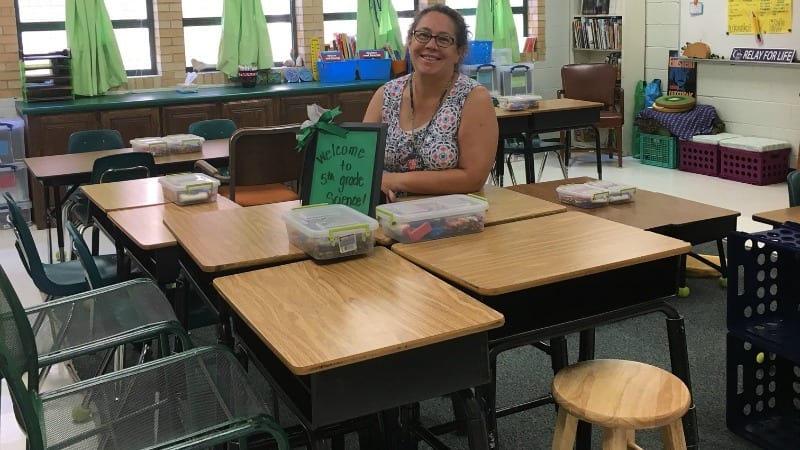Want to make your own standing desk? Learn from this teacher who took a totally DIY approach to alternative seating in her classroom.
Several years ago, I moved to a new-to-me classroom. It has a set of tall cabinets topped with counter space, and I noticed my students liked to work there whenever they could. Their interest in this space made me start researching standing desks.
I set up a project through DonorsChoose.org, an organization I had successfully used before, to request the funding. I took to social media to advertise my project, but I wasn’t able to raise half the funds I needed.
Finally, I hatched a plan to raise my traditional desks to the height of the counter using a PVC pipe frame. I’ve had several people ask me how I was able to make standing desks so easily and cheaply. So here’s how I did it!
Measure first
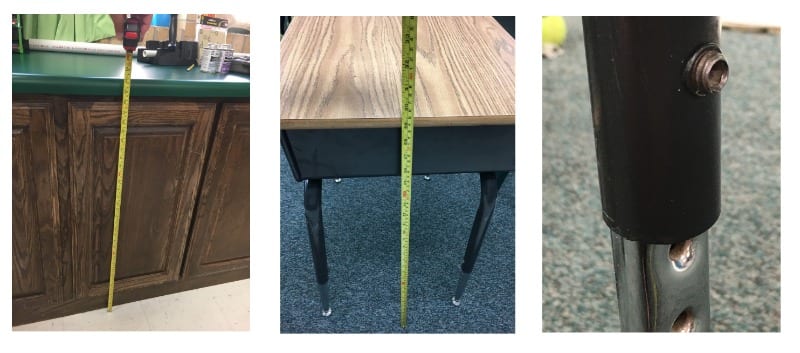
I started by taking measurements: the height of the popular counter, the height of my current wobbly desks, and the circumference of the fattest part of the leg (the bolt that held the two parts of the leg together).
Gather supplies
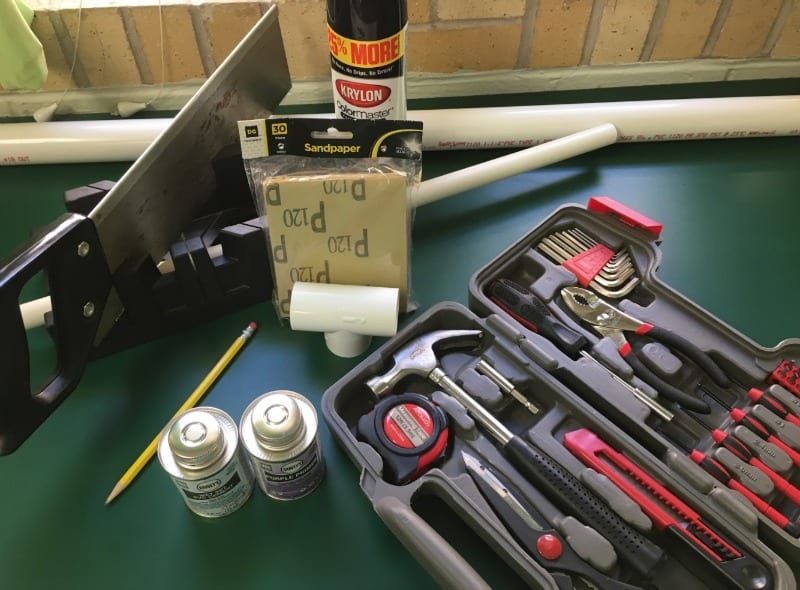
After sketching out my idea, I headed to the local hardware store to buy supplies. I needed two different sizes of PVC pipe: 1 ½ inch to make the legs and ¾ inch to make the cross pieces that held the legs together. I bought couplings to connect pipes together and cap ends to make feet so that the legs wouldn’t scratch the floor. I also had to make a trip to a plumbing store to get T fittings that would connect the larger pieces to the smaller ones. Other supplies I bought included: fine grit sand paper, PVC pipe glue, and black spray paint.
Make your cuts
I used the tape measure from my tool kit to get exact measurements. Then my husband contributed a saw to cut the larger pipe and a miter box to guide the saw and a PVC pipe cutter for the smaller pipe. I carefully measured each length of pipe, marking where they needed to be cut.
Time to paint
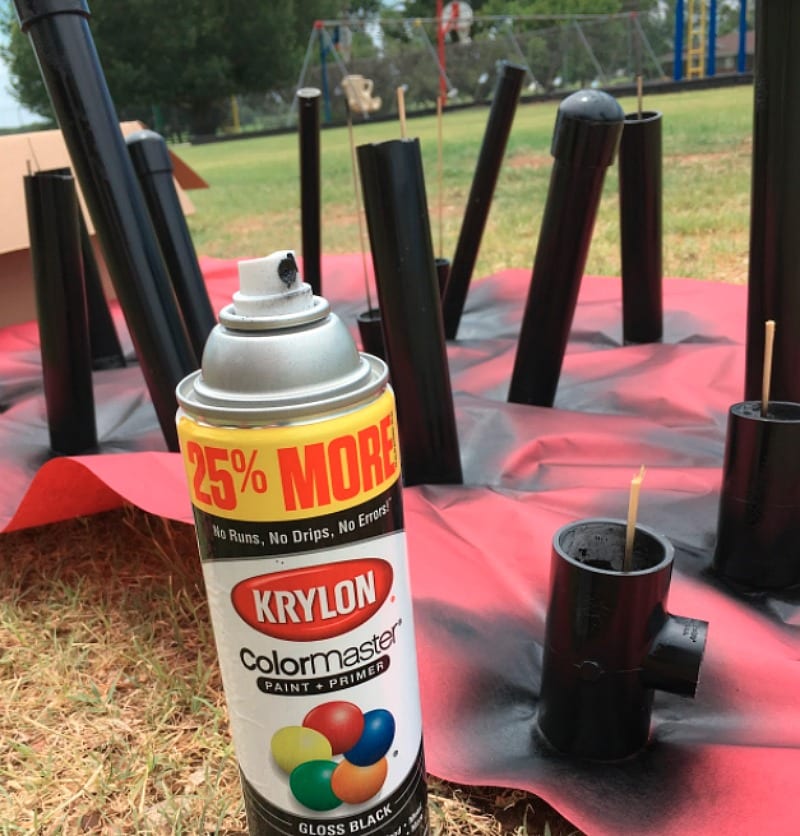
Once I had all of the pieces cut, I headed outside with a large sheet of bulletin board paper and the paint. The wind and the uneven ground made standing the pipes on their ends impossible, so I dug out some skewers and improvised.
Measure again
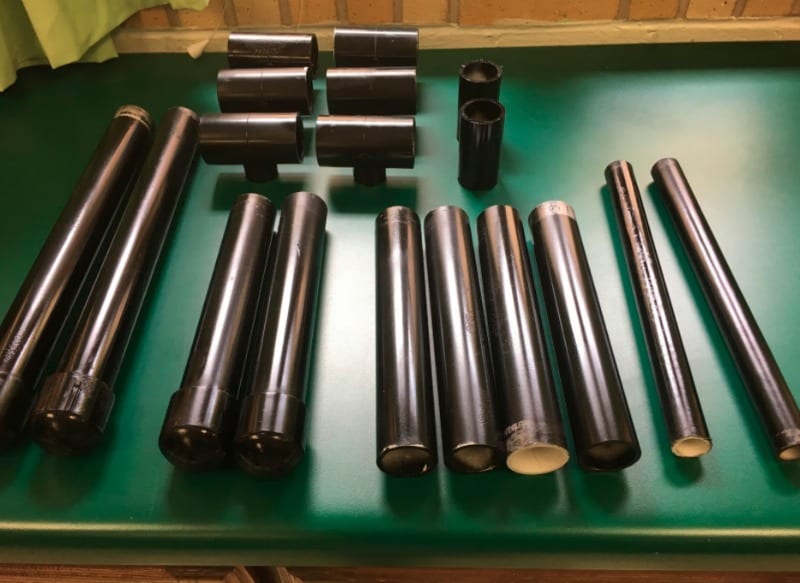
Here are all the pieces, painted and ready to be assembled. I used 4 end caps, 2 longer pieces of 1 ½-inch pipe, 6 shorter pieces of 1 ½-inch pipe, 6 T joints that had openings for 1 ½-inch and ¾-inch pipe, 2 couplings for 1 ½-inch pipe and three lengths of ¾-inch pipe. Before assembling the legs, I measured how much of the leg would be hidden in the joint and sanded that part to make it easier to slide the parts together.
Assemble the front legs
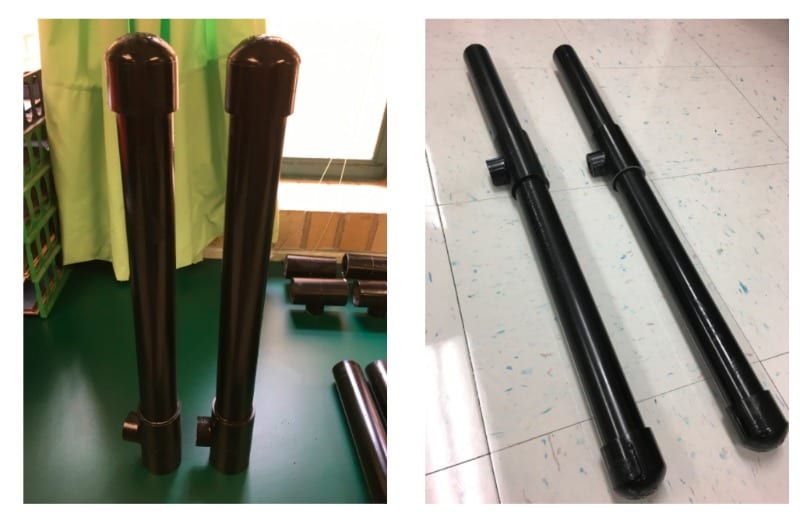
I started by putting the end caps on the bottom of the two long 1 ½-inch pieces that formed the front legs. Then I added a T joint and a shorter piece of 1 ½-inch pipe that formed the top of the front leg. I made sure that the two legs were the same length and that the T joints were the same distance from the bottom of the leg. I ended up feeling like I didn’t need to glue the pieces together because they fit really tightly. If the pieces had fit together loosely, I would have needed to glue them to prevent the length from changing as students used the desks
Assemble back legs
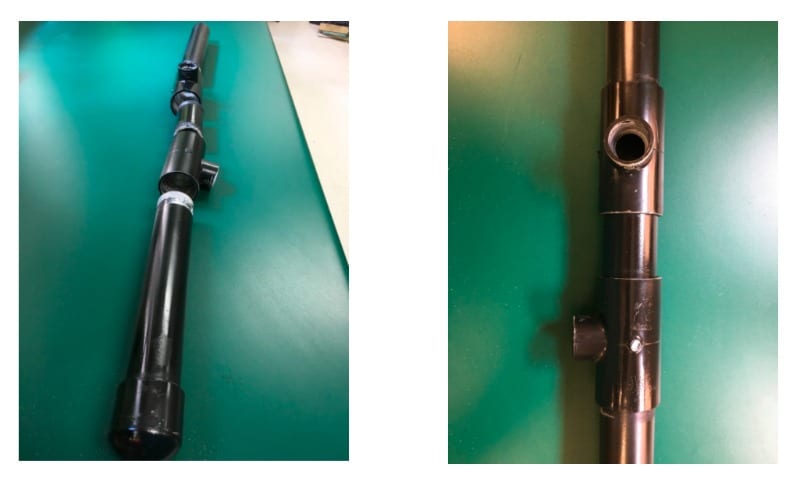
To assemble the back legs, I started by putting the end caps on the bottom of two of the 1 ½-inch pipes. I added a T joint and a coupling and then a second T joint at a right angle from the first T joint. Then I added another piece of 1 ½-inch pipe to form the top of the back leg. I made sure that the T joints were all the same distance from the bottom of each leg as their counterpart on the other back leg and the front leg.
Finish it off
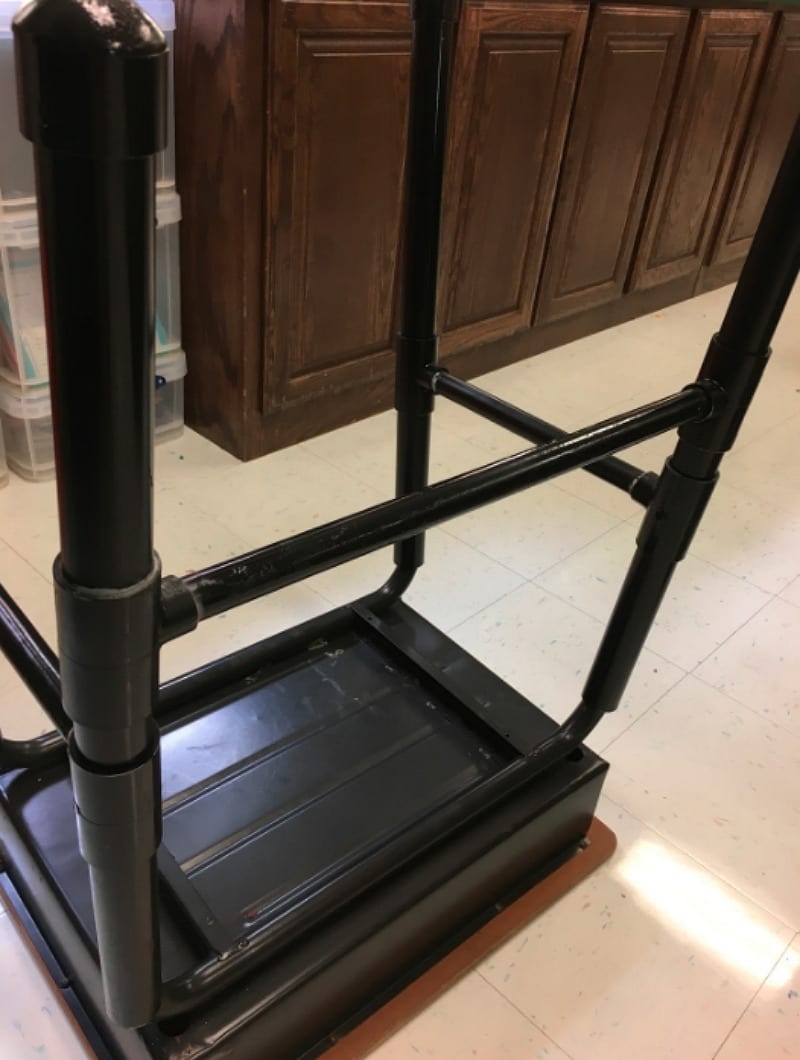
To assemble the desk I slipped each leg over the corresponding legs of the desk, wiggling them a bit to get them past the pesky bolt. Then I shoved one end of each cross piece into the T and wiggled it into the corresponding T on the other leg. I used a black Sharpie marker to cover any places where I accidentally scratched the paint off.
Watch the video to see how these desks all came together.
[embedyt] https://www.youtube.com/watch?v=9U1CLTOGLXc[/embedyt]
Would you ever make your own standing desk for the classroom?

